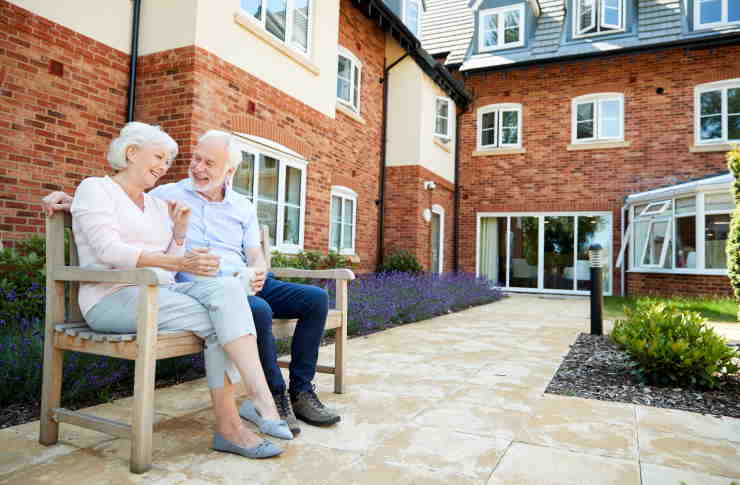Discover the Stunning New 2-Bed Senior Houses Everyone’s Talking About
What makes senior houses different from standard homes? Many new 2-bed models include step-free access, wide doorways, low-maintenance exteriors, non-slip flooring, grab bars in bathrooms, and easy-access outdoor spaces. These thoughtful features are common in modern senior communities.

What Makes These Senior Houses Different from Standard Homes?
Senior-specific housing incorporates design elements rarely found in conventional residential construction. These homes feature single-story layouts to eliminate stair-related risks, while incorporating reinforced bathroom walls for future grab bar installation. Electrical outlets are positioned higher than standard height to reduce bending, and light switches include illuminated options for nighttime visibility.
The flooring typically consists of non-slip materials with minimal thresholds between rooms, reducing tripping hazards common in traditional homes. Kitchen countertops are often designed at varying heights to accommodate different mobility needs, and cabinet hardware features easy-grip handles rather than standard knobs. Additionally, these homes include enhanced lighting throughout, with particular attention to stairways, hallways, and outdoor areas.
How Do Step-Free Entry and Wide Doorways Enhance Daily Living?
Step-free entries eliminate the physical barriers that can make accessing homes challenging for seniors with mobility limitations. These entrances typically feature gradual slopes rather than steps, allowing easy passage for wheelchairs, walkers, or individuals with balance concerns. The design also benefits seniors carrying groceries or managing packages without navigating potentially hazardous steps.
Wide doorways, typically measuring 36 inches instead of the standard 30 inches, provide comfortable passage for mobility aids while reducing the risk of bumping into door frames. This extra width proves particularly valuable in bathrooms and bedrooms where maneuvering space is often limited. The wider passages also create a more open, spacious feeling throughout the home, contributing to both physical comfort and psychological well-being.
Why Is Low-Maintenance Design Essential for Daily Ease?
Low-maintenance features significantly reduce the physical demands and costs associated with home upkeep as seniors age. Exterior materials such as vinyl siding, composite decking, and metal roofing require minimal annual maintenance compared to wood surfaces that need regular painting or staining. Landscaping plans typically emphasize native plants and automated irrigation systems to minimize yard work.
Interior features include stain-resistant flooring, easy-clean surfaces, and simplified maintenance systems. Many of these homes incorporate tankless water heaters and high-efficiency HVAC systems that require less frequent servicing. The reduced maintenance burden allows seniors to allocate their time and energy toward activities they enjoy rather than home upkeep tasks that may become increasingly difficult.
What Safety Features Do Seniors Appreciate Most?
Security and safety systems in senior housing extend beyond basic alarm systems to include comprehensive emergency response capabilities. Many homes feature medical alert system pre-wiring, allowing residents to quickly install emergency communication devices. Motion-sensor lighting automatically illuminates pathways during nighttime hours, reducing fall risks.
Bathroom safety receives particular attention, with curbless showers featuring built-in seating and handheld shower fixtures. Non-slip flooring materials and strategically placed grab bars provide additional stability. Kitchen safety features include automatic shut-off systems for stoves, easily accessible fire extinguishers, and slip-resistant flooring. Additionally, many homes include backup power systems for essential functions during outages.
How Do Comfortable and Practical Layouts Improve Quality of Life?
Thoughtful space planning in senior housing prioritizes both functionality and comfort through strategic room placement and flow design. Master bedrooms are typically located near main bathrooms to minimize nighttime travel distances, while guest bedrooms provide space for visiting family or live-in caregivers. Open floor plans between kitchens and living areas facilitate social interaction and easier navigation.
Storage solutions address the practical needs of downsizing seniors, with built-in organizers and accessible shelving throughout. Many layouts include dedicated spaces for hobbies or home offices, recognizing that retirement often involves pursuing new interests. The second bedroom frequently serves multiple purposes, functioning as a craft room, library, or exercise space depending on individual preferences.
The cost of these specialized senior homes varies significantly based on location and included features. Generally, prices range from $200,000 to $500,000, with maintenance fees between $200 and $800 monthly when part of planned communities.
| Home Type | Price Range | Monthly Fees | Key Features |
|---|---|---|---|
| Independent Senior Cottages | $200,000-$350,000 | $200-$400 | Basic accessibility features, community amenities |
| Premium Senior Villas | $350,000-$500,000 | $400-$800 | Enhanced safety systems, concierge services |
| Custom Senior Homes | $400,000-$700,000 | Varies | Fully customizable accessibility and luxury features |
Prices, rates, or cost estimates mentioned in this article are based on the latest available information but may change over time. Independent research is advised before making financial decisions.
The emergence of purpose-built senior housing represents a meaningful response to the changing needs of America’s aging population. These 2-bedroom homes successfully balance independence with practical accessibility, offering solutions that allow seniors to maintain their preferred lifestyle while addressing safety and maintenance concerns. As more developers recognize this market opportunity, prospective residents benefit from increased options and competitive features designed specifically for their life stage.




